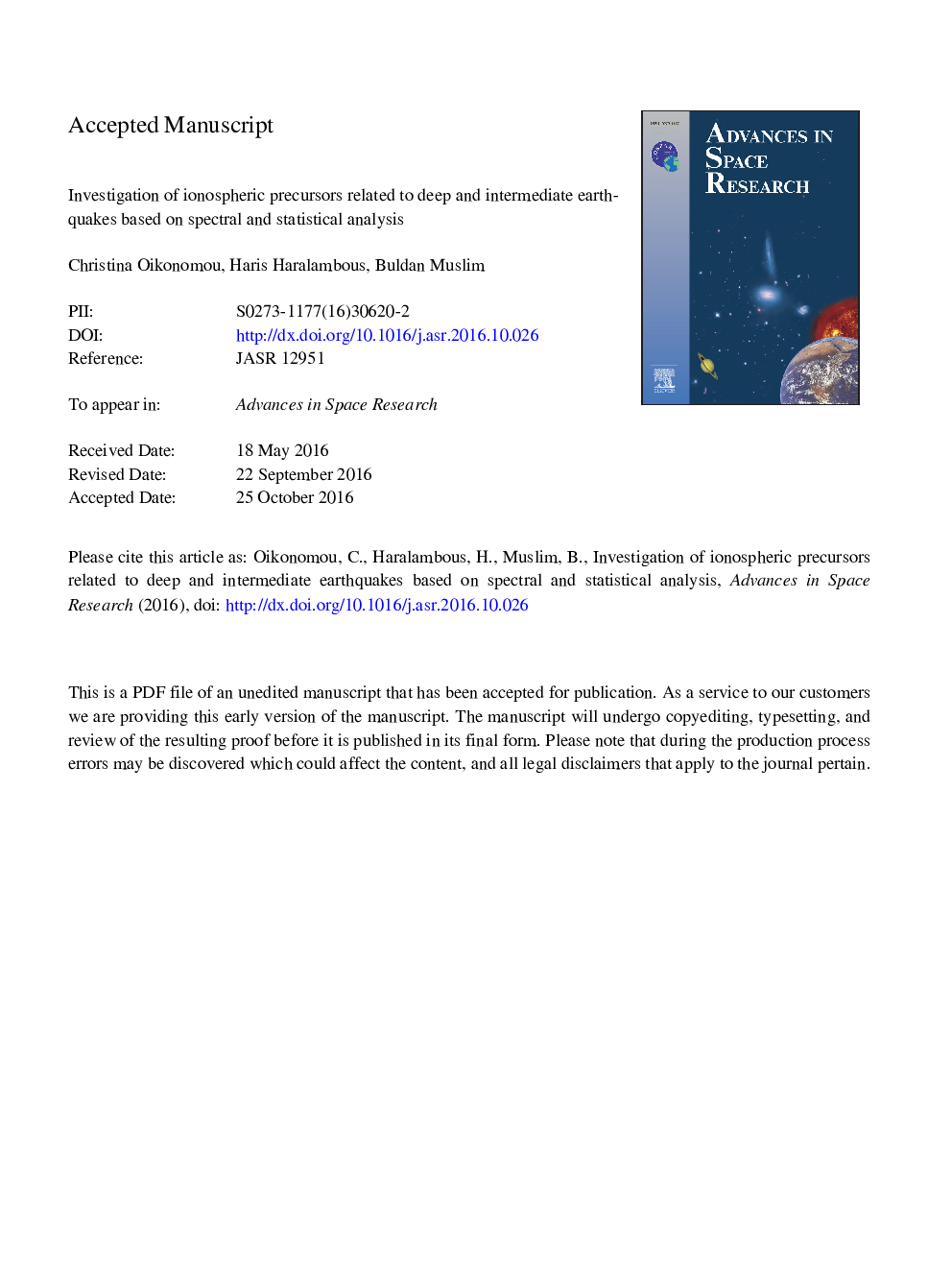| Article ID | Journal | Published Year | Pages | File Type |
|---|---|---|---|---|
| 5486308 | Advances in Space Research | 2017 | 30 Pages |
Abstract
Ionospheric TEC (Total Electron Content) variations prior to the deep (â600Â km) earthquake doublet close to magnetic equator in Peru (MÂ =Â 7.6) and to the intermediate (â200Â km) earthquake in Afghanistan (MÂ =Â 7.5) during 2015 were investigated using measurements from Global Navigation Satellite System (GNSS) network with the aim to detect possible ionospheric precursors of these events. For this we applied both statistical and spectral analysis. Ionospheric anomalies related to both earthquakes were observed few hours and few days prior to the earthquakes during daytime localized mainly near the epicenter. These were large-scale positive TEC anomalies and small-scale TEC oscillations with periods of 20Â min and duration around 2-4Â h appearing at the same local time each day. Several days prior to the earthquake in Peru a significant phenomenon was observed during afternoon time related to the modification of the Equatorial Ionization Anomaly (EIA) structure. During nighttime, however, it was not possible to identify any ionospheric earthquake precursor due to the concurrence of various phenomena, such as Equatorial Plasma Bubbles and pre- and post-midnight TEC peaks prior to Peru earthquake, and solar terminator transition prior to both earthquakes which could induce resembling ionospheric anomalies.
Related Topics
Physical Sciences and Engineering
Earth and Planetary Sciences
Space and Planetary Science
Authors
Christina Oikonomou, Haris Haralambous, Buldan Muslim,
